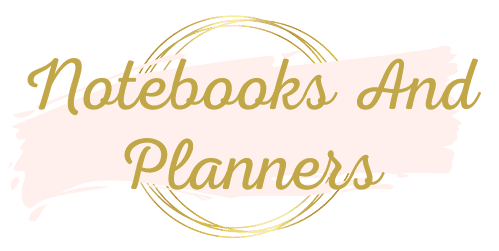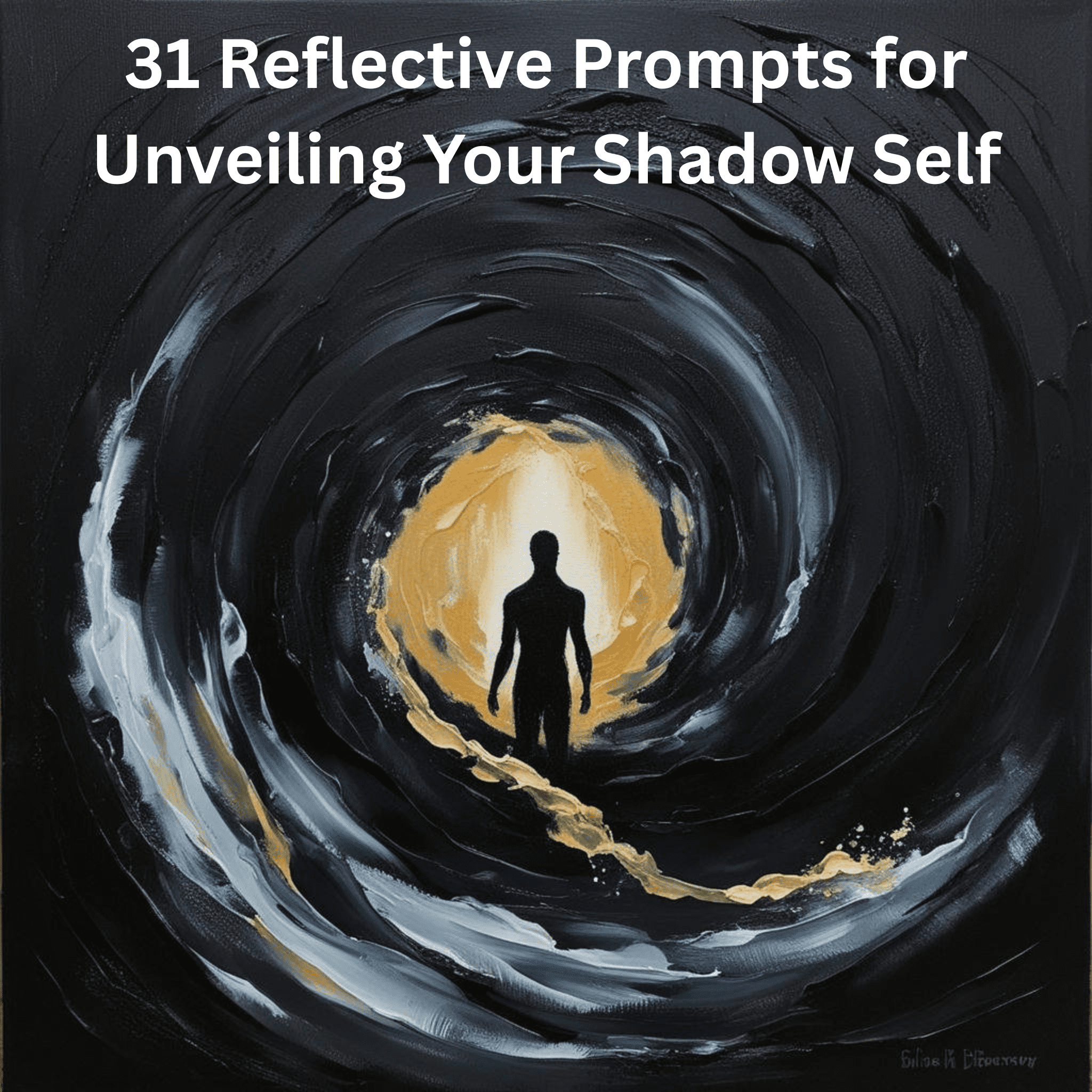Last Updated on May 1, 2025 by Jen
The ‘shadow self’ is a concept in psychology introduced by Carl Jung, referring to the hidden aspects of our personality that we choose to reject or suppress. It’s the part of us that houses our deepest fears, insecurities, and perceived flaws. While it might seem daunting, exploring your shadow self is a crucial step towards self-discovery and personal growth.
By acknowledging and understanding these hidden parts, we can integrate them into our conscious self, leading to greater self-awareness and authenticity. It allows us to confront our fears and insecurities, break negative patterns, and heal from past traumas.
Moreover, it fosters empathy, self-compassion, and kindness towards ourselves, as we learn to accept and love all parts of who we are. So, while the journey into the shadow may be challenging, it’s a transformative process that ultimately leads to a more fulfilling and self-aware life.
31 Reflective Prompts for Unveiling Your Shadow Self
1. What emotion do I find most difficult to handle?
Understanding the emotions that are difficult for you to handle can help you identify triggers and develop coping mechanisms. It’s a crucial step in emotional intelligence and self-awareness.
2. What traits do I dislike in others that I might also possess?
Recognizing traits you dislike in others that you may also possess can help you understand your biases and work towards personal growth. It’s about acknowledging your flaws and working on them.
3. What memories from my past still trigger a strong emotional response?
Exploring past memories that still trigger strong emotions can help you heal from past traumas and understand how they may be affecting your present behavior.
4. What do I fear the most about myself?
Identifying your fears about yourself can help you confront them and work towards overcoming them. It’s about facing your insecurities and turning them into strengths.
5. What parts of my personality do I often try to hide?
Understanding the parts of your personality that you try to hide can help you embrace your true self. It’s about accepting all parts of yourself, even the ones you’re not proud of.
6. What makes me feel guilty and why?
Exploring what makes you feel guilty can help you understand your values and morals. It’s about learning from your mistakes and making amends where necessary.
7. What do I often criticize myself for?
Identifying what you often criticize yourself for can help you develop self-compassion and kindness. It’s about treating yourself with the same empathy you would extend to others.
8. What do I judge others for that I do myself?
Recognizing what you judge others for that you also do can help you develop empathy and understanding. It’s about acknowledging your hypocrisy and striving for consistency in your values.
9. What do I consider my biggest failure and why?
Understanding your perceived failures can help you learn from them and grow. It’s about turning negative experiences into opportunities for personal development.
10. What do I find hard to forgive in myself?
Identifying what you find hard to forgive in yourself can help you develop self-compassion and forgiveness. It’s about letting go of past mistakes and moving forward with kindness and understanding.
11. What negative patterns keep recurring in my life?
Recognizing recurring negative patterns can help you break the cycle and make positive changes. It’s about understanding your habits and working towards healthier ones.
12. What do I often lie to myself about?
Identifying what you often lie to yourself about can help you live more authentically. It’s about being honest with yourself and facing the truth, no matter how uncomfortable.
13. What do I envy in others?
Understanding what you envy in others can help you identify what you feel is lacking in your life. It’s about recognizing your desires and working towards fulfilling them.
14. What do I try to control in my life and why?
Understanding what you try to control can help you identify areas where you may need to let go and trust the process. It’s about finding balance between control and surrender.
15. What do I feel insecure about?
Identifying your insecurities can help you work towards self-confidence and self-love. It’s about acknowledging your vulnerabilities and turning them into strengths.
16. What do I feel ashamed of?
Recognizing what you feel ashamed of can help you heal and forgive yourself. It’s about letting go of guilt and embracing self-compassion.
17. What do I find hard to express to others?
Understanding what you find hard to express can help you improve your communication skills and deepen your relationships. It’s about being open and honest with your feelings.
18. What do I get defensive about?
Identifying what you get defensive about can help you understand your triggers and work towards emotional maturity. It’s about responding rather than reacting to criticism or conflict.
19. What do I try to avoid in my life?
Recognizing what you try to avoid can help you face your fears and challenges head-on. It’s about stepping out of your comfort zone and embracing growth.
20. What do I consider my dark side?
Understanding your dark side can help you integrate all aspects of your personality. It’s about acknowledging your shadow self and using it for personal growth.
21. What do I fear others will see in me?
Identifying what you fear others will see in you can help you embrace authenticity and vulnerability. It’s about being true to yourself, regardless of others’ opinions.
22. What do I blame myself for?
Recognizing what you blame yourself for can help you let go of self-judgment and embrace self-forgiveness. It’s about learning from your mistakes and moving forward.
23. What do I need to forgive myself for?
Understanding what you need to forgive yourself for can help you heal and grow. It’s about letting go of past regrets and embracing self-compassion.
24. What do I feel unworthy of?
Identifying feelings of unworthiness can help you cultivate self-love and self-esteem. It’s about recognizing your worth and believing in your capabilities.
25. What do I feel is wrong with me?
Recognizing what you feel is wrong with you can help you challenge negative self-beliefs and embrace self-acceptance. It’s about replacing self-criticism with self-love.
26. What do I feel is not good enough about me?
Understanding what you feel is not good enough about you can help you cultivate self-compassion and self-esteem. It’s about recognizing your strengths and embracing your imperfections.
27. What do I feel is unacceptable about me?
Identifying what you feel is unacceptable about you can help you challenge societal norms and embrace self-acceptance. It’s about valuing your uniqueness and rejecting unrealistic standards.
28. What do I feel is misunderstood about me?
Understanding what you feel is misunderstood about you can help you communicate more effectively and foster deeper connections. It’s about expressing your true self and seeking understanding from others.
29. What do I feel is ignored about me?
Recognizing what you feel is ignored about you can help you assert your needs and desires. It’s about advocating for yourself and ensuring your voice is heard.
30. What do I feel is neglected about me?
Identifying what you feel is neglected about you can help you prioritize self-care and self-love. It’s about nurturing all aspects of yourself and ensuring your needs are met.
31. What do I feel is unloved about me?
Understanding what you feel is unloved about you can help you cultivate self-love and self-compassion. It’s about embracing all parts of yourself, even the ones you find hard to love.
These prompts are designed to help you explore your shadow self – the parts of your personality that you may have repressed or ignored. By confronting these aspects, you can achieve greater self-understanding, self-acceptance, and personal growth. It’s a journey of self-discovery and self-improvement that fosters empathy, compassion, and kindness towards yourself.





